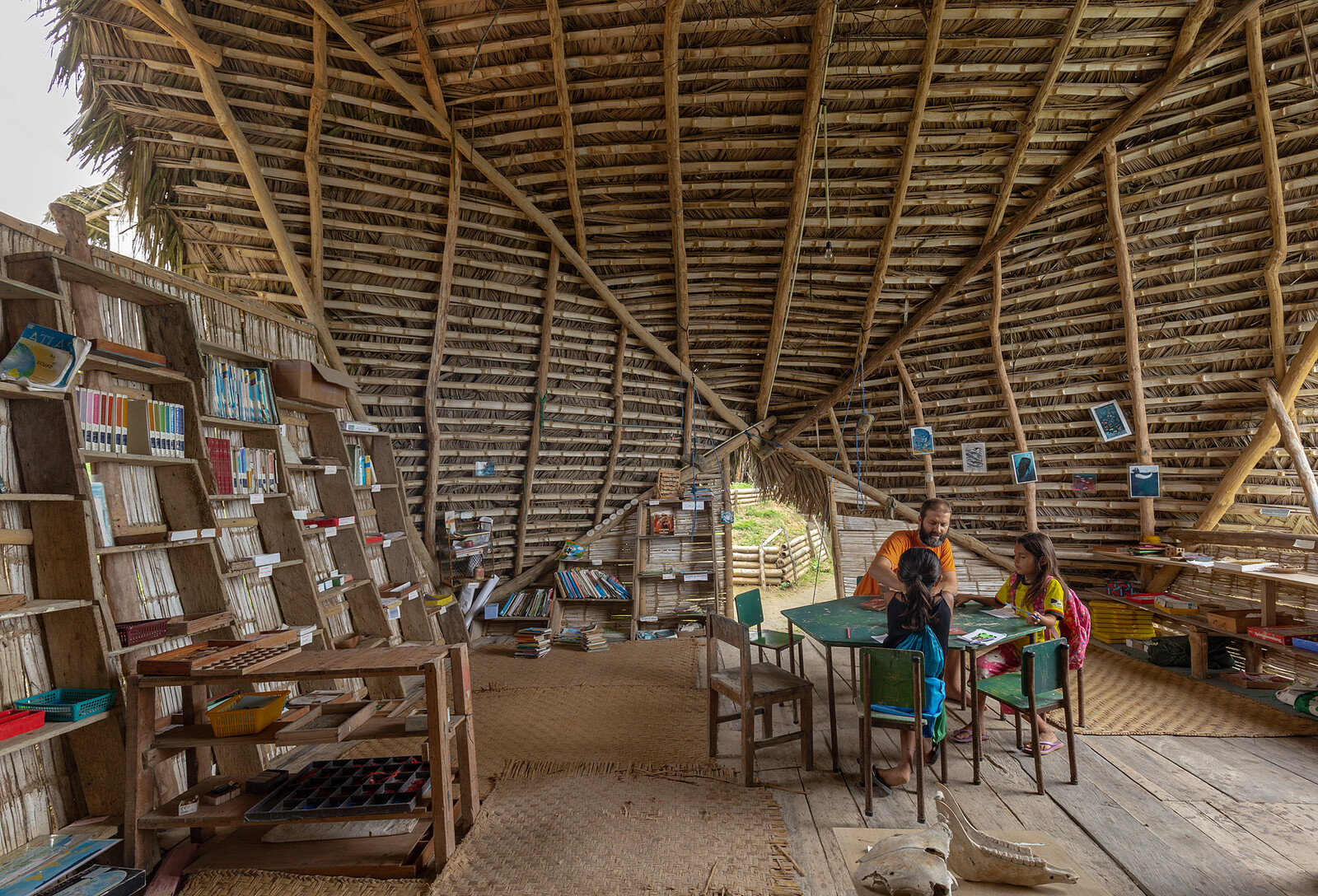Sharjah Architecture Triennial
Sharjah
United Arab Emirates
The President of Sharjah Architecture Triennial (SAT), Hoor Al Qasimi, and the Curator of the second edition, Tosin Oshinowo, have announced the dates and first participants for The Beauty of Impermanence: An Architecture of Adaptability, which runs from 11 November 2023 to 10 March 2024. The Triennial title refers to how issues of scarcity in the Global South have created a culture of re-use, re-appropriation, innovation, collaboration and adaptation.
Triennial curator Oshinowo, alongside her curatorial advisory board, has selected participants who will reflect on the theme and how innovative design solutions can reorient global conversations to create a more sustainable, resilient, and equitable future. Participants will include Al Borde, Cave_bureau, DAAR—Sandi Hilal and Alessandro Petti, Ola Uduku & Michael Collins, Limbo Accra, Miriam Hillawi Abraham, MOE+ Art Architecture (MOE+AA), Nifemi Marcus-Bello, Sandra Poulson, Thao Nguyen Phan, Wallmakers, Yara Sharif & Nasser Golzari and Yussef Agbo-Ola. Their works will span public installations and collaborative projects that examine these ideas within the cultural and historic context of Sharjah.
Contemplating Sharjah as a place defined by fast change and civic transience, Ghanaian spatial design studio Limbo Accra will present a public art and architecture installation that responds to the present stasis of an incomplete mall. DAAR—Sandi Hilal and Alessandro Petti will present an experimental preservation project that deals with the paradox of permanent temporariness.
Focusing on the relationship between materials, context and landscape, an installation by Angolan artist Sandra Poulson will analyse the ever-present dust in Luanda to reflect on the city’s economic, social and cultural framework. Ola Uduku & Michael Collins will present works by British-Nigerian architect Alan Vaughan-Richards (1925-1989) and review his environmentally-conscious explorations that would make up the canon of West African Tropical Modernism.
The effect of climate change on Sharjah’s biodiversity is central to projects such as a fabric-based temple by London/Amazon-based architect Yussef Agbo-Ola that will honour non-human life and endangered species from the region. Elsewhere, Lagos-based practice MOE+ Art Architecture (MOE+AA) will be embedded in Sharjah’s industrial environment – creating a moment of ecological pause that will act as a counterpoint to the man-made, mechanised landscapes that have become ubiquitous across the Emirates.
Other participants will contemplate the architectural history of the region in relation to its natural landscape. Nairobi-based architects Cave_bureau will expand their long-term research program of the Anthropocene Museum by occupying a disused slaughterhouse, projecting the geometries of a Neolithic cave to allude to the shared meanings between these two geologies of varying impermanence.
Inventive material explorations will be undertaken by the Indian practice Wallmakers, who will present a naturally-sculpted pavilion that looks to reimagine the possibilities of building with sand.
Demonstrating the geographical breadth of the Triennial, and the international implications of its inquiries, a film by Thao Nguyen Phan will highlight the past and present violence and destruction that occurs in the Mekong Delta, interspersed with footage from Sharjah.
Reflecting on the Triennial’s themes of re-appropriation and re-use, Nifemi Marcus-Bello will present an adaptable pavilion crafted using local weaving techniques that will house the studio’s explorations of indigenous contemporary design solutions emerging out of Lagos. Likewise, Architects Yara Sharif & Nasser Golzari will assemble discarded, disparate components in a challenge to the commodification of resources and consumers.
Multi-disciplinary Ethiopian designer Miriam Hillawi Abraham will present The Museum of Artifice, a life-sized facsimile of a Lalibela church façade set in Sharjah’s old Al Jubail Vegetable Market.
Finally, reinforcing the edition’s emphasis on contextuality, Ecuadorian studio Al Borde will envision a shaded space that directly engages with the outdoor architecture of Al Qasimiyah School, utilising sustainable, locally-sourced materials that are in abundance.
A full list of participants and programming details for Sharjah Architecture Triennial 2023 will be announced later this year. See here for Tosin Oshinowo’s full curatorial statement.
Press office
Pelham Communications, T +44 (0) 20 8969 3959 / @pelhamcomms. Laura Callendar: laura [at] pelhamcommunications.com and Rel Hayman: rel [at] pelhamcommunications.com.
About Sharjah Architecture Triennial
Founded in 2018 by Khalid Al Qasimi, Sharjah Architecture Triennial (SAT) is a platform for architecture and urbanism in a region that extends from West Asia to South Asia and the African continent. Physically anchored in Sharjah and the United Arab Emirates, SAT aims to engage diverse audiences and stakeholders in a collective conversation on architecture at the neighbourhood, city, and regional levels. Institutional research and programming support on-going critical reflection through exhibitions, publications, and public programmes in tandem with its international editions. SAT is committed to pursuing a multi-disciplinary approach that fosters an understanding of the broader role of architecture, including its relation to social and environmental issues.
